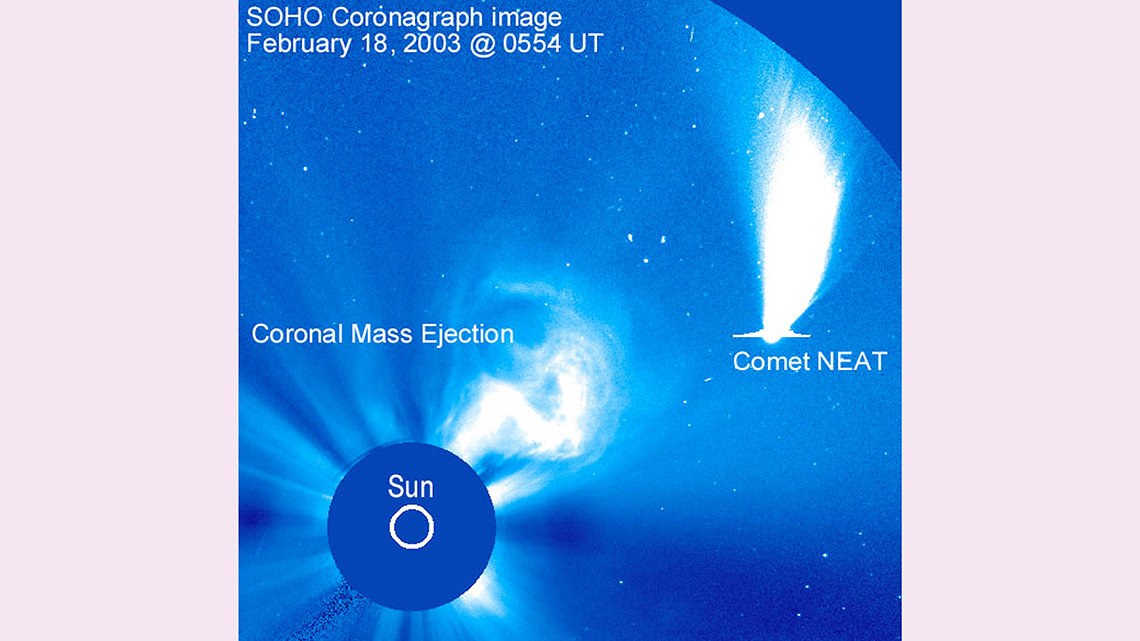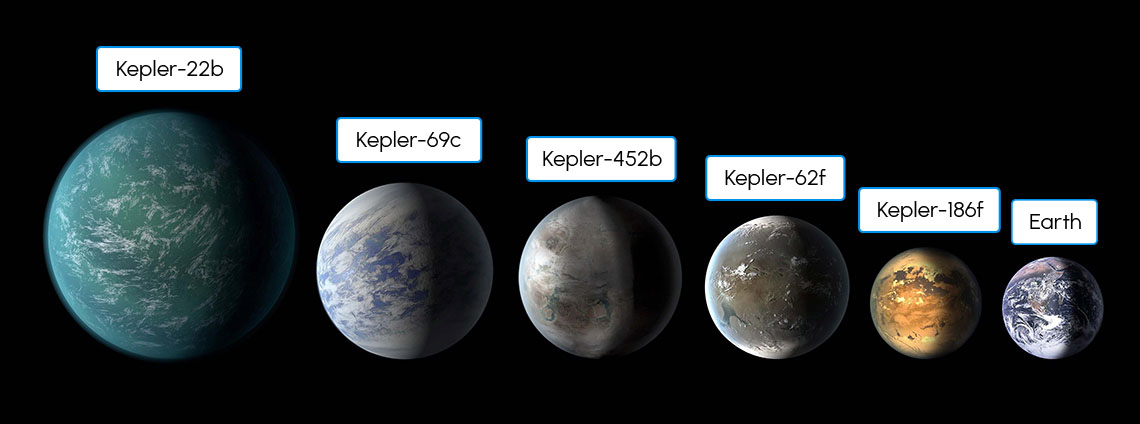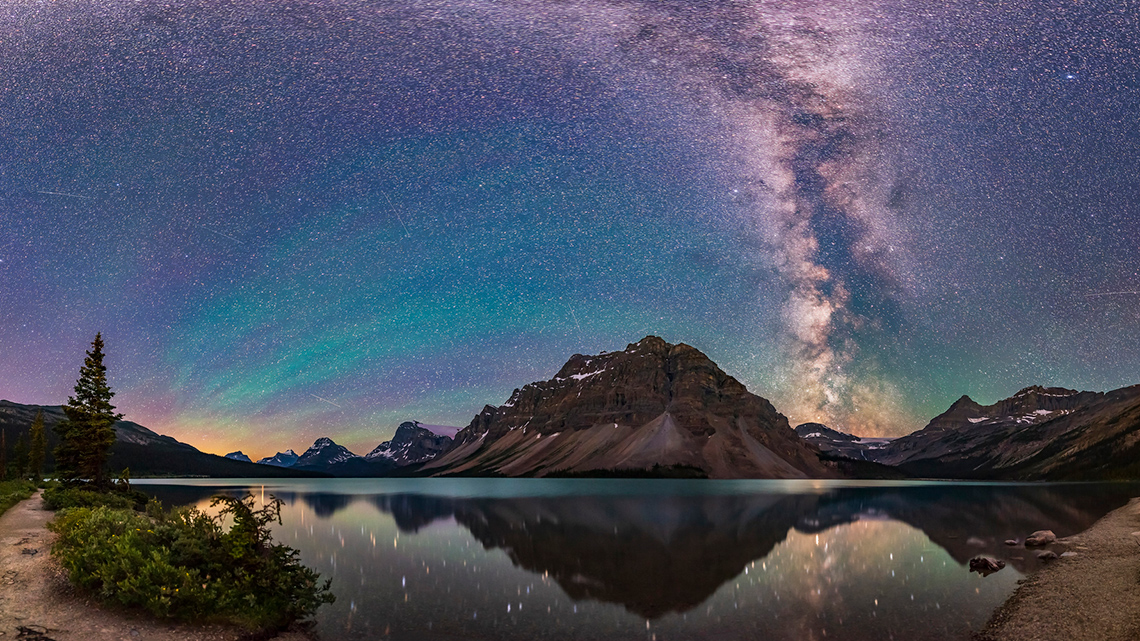Minds On
What do astronomers do?
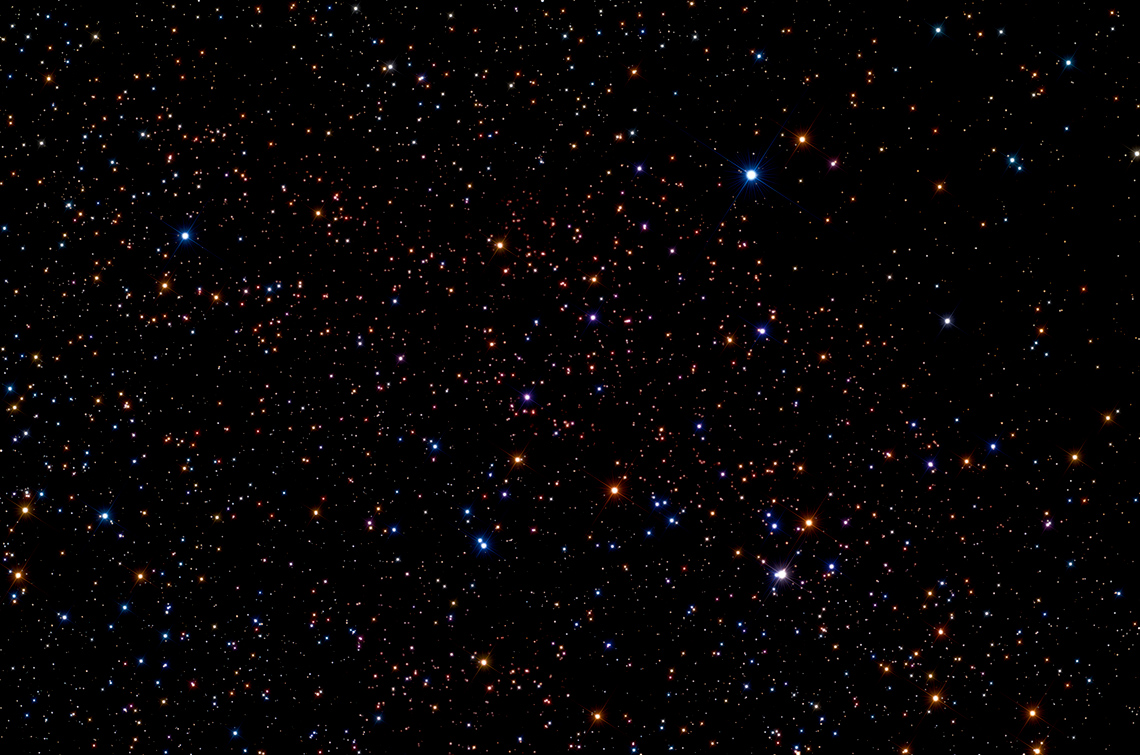
Astronomy is a field of science that studies space and all its contents. Next, we will explore a video to learn more about what astronomers do.
Make a list of “I wonder” questions before, during and after exploring the video.
Complete the What Astronomers Do organizer in your notebook or using the following fillable and printable document. If you would like, you can use speech-to-text or audio recording tools to record your thoughts.
|
Before watching the video, I wonder… |
During the video, I wonder… |
After the video, I wonder… |
|---|---|---|
Press the ‘Activity’ button to access What Astronomers Do.
Explore this TVOK News video clip to learn more about being an astronomer.
Don’t forget to complete the last column of your “What Astronomers Do” organizer with anything that you still might be wondering after viewing the video.
How might you go about finding answers to your questions or wonderings?
Action
Innovation in Canada
This learning activity features emerging technologies, STEM contributions, and Canadian innovations that are making a difference.

An introduction to the night sky

When we observe the night sky what is often the most prominent object, aside from the Moon, that we can observe? Stars!
Depending on where you live on the planet, will determine how many and which exact stars you are able to observe.
Before we continue learning about stars in our night sky, complete the first two columns (we’ll come back to the third column later!) of the Know, Wonder, Learn Chart in your notebook or using the following fillable and printable document. If you would like, you can use speech-to-text or audio recording tools to record your thoughts.
Explore this video entitled “What is a Star?” to learn more about the twinkling emitters of light in our night sky.
Did you know that stars are born in “star nurseries”? That’s the name given to nebulae (the plural form of a “nebula”), which are clouds of dust and gas found in space that produce stars.
Once stars are born, they stay in the same spot in the sky for a very long time. Our perspective of them changes slightly with each passing day, but that’s only because of the Earth’s rotation! As the Earth turns, our perspective of the stars shifts slightly to the west with each passing day. This is why we see different groupings of stars, or constellations, during different times of the year. These facts are why for centuries, many different peoples have used stars to guide them with the passage of time and the seasons, and to navigate their position on Earth.
The sky above and below the equator

Did you know that the sky looks different both above and below the equator?
The stars and constellations that we observe in Canada are different than those someone far in the Southern Hemisphere would be able to observe. Do you know why this is?
It’s because of the position of the Earth in its orbit around the Sun!
Press the following tabs to learn more about elements of our night sky.
Examine the following video clip of the Earth rotation on its axis. As the Earth turns, observe the border of where night turns to day. Can you identify evidence of the Earth’s tilt?
The number of stars and other celestial bodies visible in the night sky depends upon the amount of light pollution being emitting where you are on the planet. Big cities, for example, tend to have a lot of light pollution making elements of the night sky hard to observe. More remote areas, on the other hand, have less light pollution and it’s easier to observe stars and other celestial bodies.
Because the Earth’s axis is slightly tilted, as the Earth orbits the sun, the Northern and Southern hemispheres get different amounts of sunlight, particularly in the North and South Poles. As such, the view of the night sky in winter is brighter because it is facing away from the galactic centre.

The sun is in the centre of the diagram, with four images of the Earth, tilted on an angle, following a horizontal circular orbit around the sun. The equator line is represented on all the images of the Earth. Each image of the Earth shows the intense shine of the sun over different sections of the planet indicating the hottest season.
Because Earth orbits around the Sun, this means that the landscape of the night sky changes based on our calendar and different stars and planets are observable at different times of the year.
Examine the following video to explore the Earth’s, and other planets’, rotation around the Sun.
Did You Know?
Navigating with the stars
Did you know that since stars maintain a fixed position in the sky, for centuries many travellers journeying on bodies on water used them as landmarks in the sky to guide their travels at night?
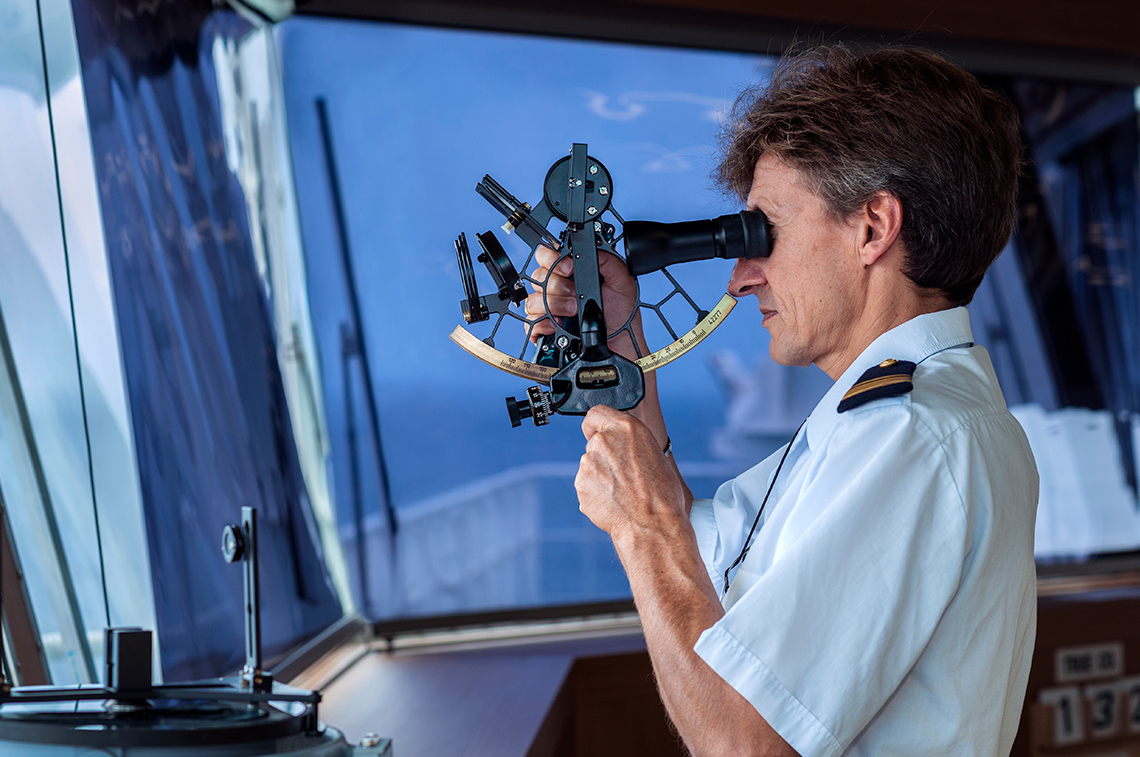
Throughout history, many sailors often used a device called a sextant which is a navigational tool that measures the angle between a celestial body, like a star, and a fixed point on the Earth, like the horizon. This device is actually often used in space travel as a backup navigation system for astronauts as a way for them to make sure their spacecraft is on the right course!
Check out this video from NASA about the cool innovation that is the sextant and how it is and has been used in space exploration.
Constellations
Constellations are stars that are grouped together because they appear to form a shape or object in the sky when connected by imaginary lines. Constellations are often given names and connect to stories, legends or histories depending on the culture naming them.
Check out this video entitled “Constellations” to learn more about groupings of stars.
While astronomers have identified 88 officially named and recognized constellations, as we learned in the video, many cultures and peoples have their own connections to groupings of stars and often their own names from them. Let’s examine one example of a constellation with different names associated with it from a Roman and Greek mythology perspective and an Indigenous perspective.
Explore this video entitled “Makinak: The Turtle” by Wilfred Buck, an Indigenous astronomer, educator and knowledge keeper from the Opaskwayak Cree Nation in Northern Manitoba, to learn more about Cepheus the King and Makinak the Turtle.
Pause and Reflect
Pause and reflect
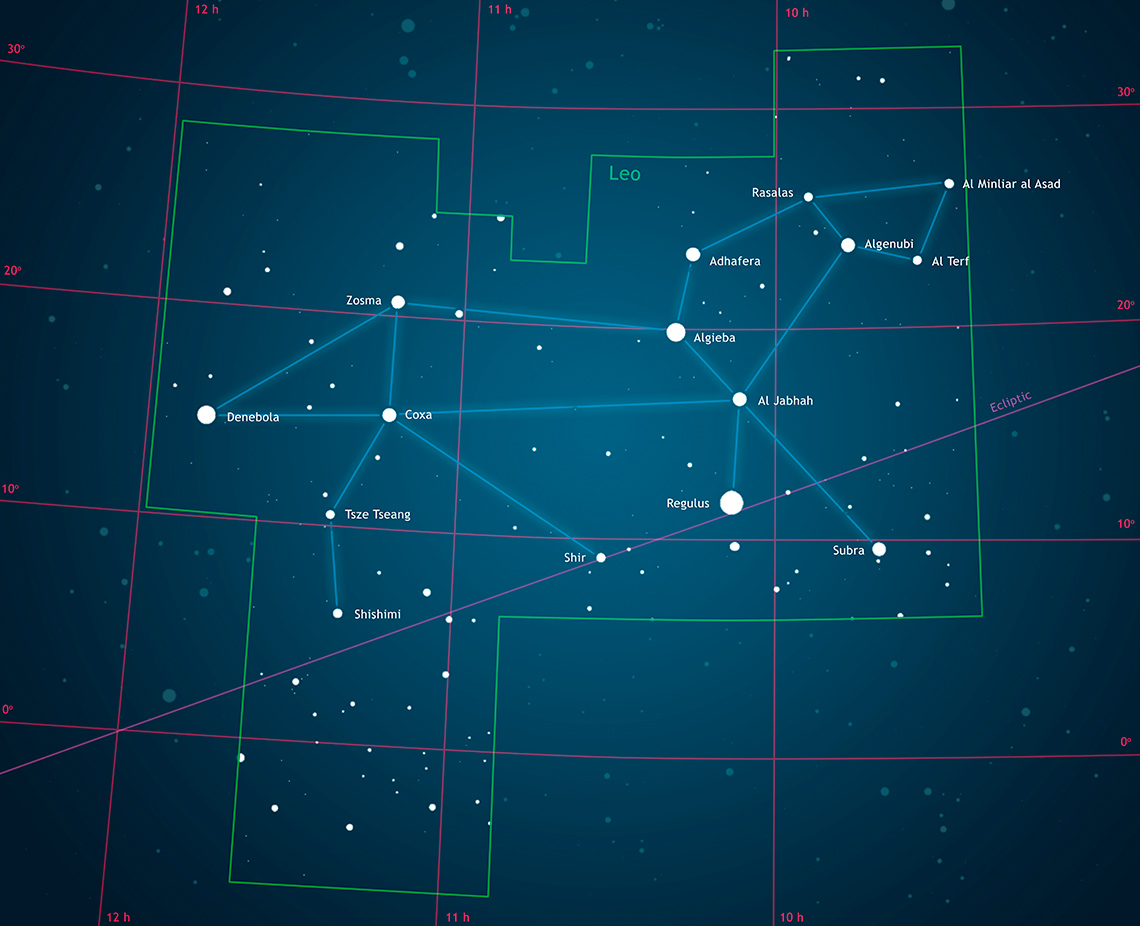
Constellation Leo
Do you know the names of any constellations and the stories, teachings or histories that connect to them? If possible, consider connecting with a trusted adult and asking them if they know any from their upbringing?
Record your ideas in a notebook or using another method of your choice such as digitally or using an audio recording.
Citizen science

Do you know what “citizen science” is? Citizen science is when the general public (people like you and those around you), participate and contribute to research to increase scientific knowledge about a certain topic and how it applies to their local environment.
For example, people might collect data over a long period of time about birds or weather patterns and share this information with scientists and researchers.
As scientists collect data on Earth’s biosphere and distant galaxies, they are increasingly calling on the general public to help them collect, observe, and classify information to find areas for closer study (Citizen Science | National Geographic Society, 2022).
What scientific discoveries have citizen scientists contributed to about space?
Explore the following images and descriptions to examine some of the discoveries citizen scientists have contributed to so far.
Let’s investigate some more citizen scientist contributions to space exploration! Explore “Five Extraordinary Citizen Science Discoveries” in the following article.
Press the Article button to access Five Extraordinary Citizen Science Discoveries.
Article (Opens in a new tab)What discovery did you find the most interesting? Why?
Record your thinking in your notebook or using another method of your choice. If possible, share your thoughts with a partner.
Consolidation
What have I learned?
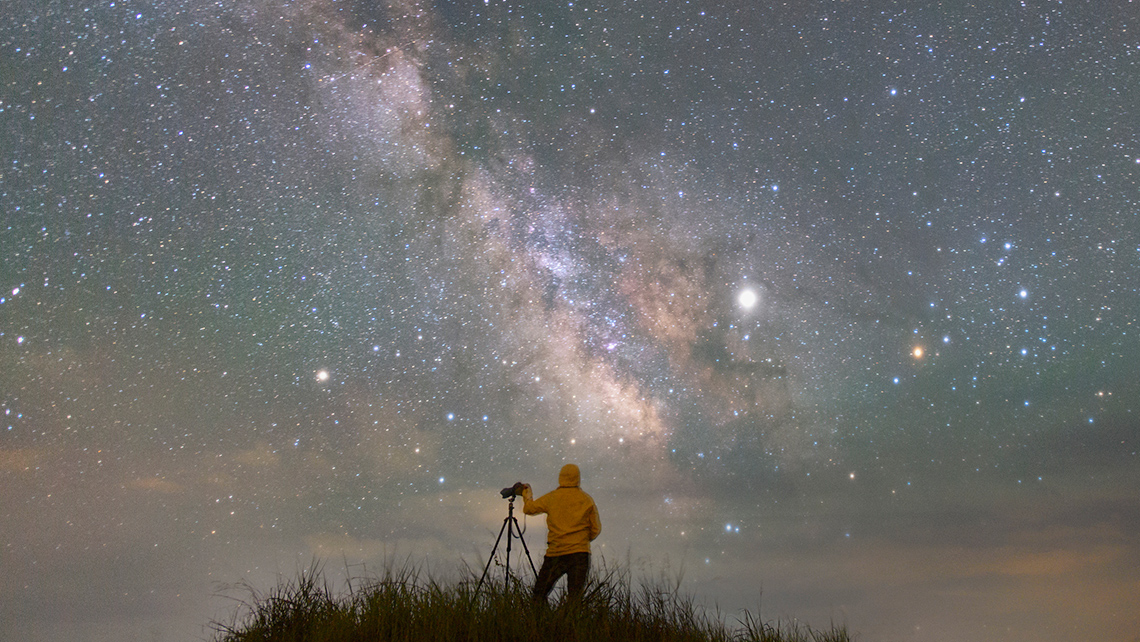
In this learning activity, we explored many different aspects of our night sky and investigated a lot about stars in particular.
It’s now time to revisit your “Know, Wonder, Learn chart” from the beginning of the Action section and complete the third and final column: “What have I learned about stars?” Record as much information as you can to consolidate your learning throughout this learning activity.
What further questions do you have about the content that you have explored? How can you go about finding answers to your new or lingering questions? You could consider continuing your learning by conducting some further research of your own.
Press ‘Student tips’ to access some important considerations about conducting research of your own.
Thinking critically about research
When researching on your own, it is important that you begin your search using websites, videos, audio recordings, or print resources from sources that would have reliable first-hand knowledge of the topic you’re researching.
Websites ending with .com, .org, and .net can be created and used by any person. Be careful when using these websites and ask yourself if these websites are credible or have bias. Those ending in .org are usually used by non-profit organizations, which may have an agenda of persuasion rather than education.
Websites ending in .edu are reserved for colleges and universities. Canadian websites have a .ca ending. It is important to consider using credible Canadian websites for research when possible!
Citizen scientist club!
You have been asked to create a club of citizen scientists within a school or community that will be exploring and contributing to discoveries in space. Create an advertisement in a method of your choice, recruiting members of the school or community to be citizen scientists who are exploring space.
Press ‘Citizen Science Club’ to access ideas on what to include in your advertisement.
Your advertisement may include information on the following:
- What is a citizen scientist?
- What qualities and/or skills might a citizen scientist have?
- An example and an explanation of a discovery citizen scientists have already helped to make.
- What do you think the club will be exploring in space?
- What images/drawings would you include?
What exciting space discoveries might your club make?
Reflection
As you read through these descriptions, which sentence best describes how you are feeling about your understanding of this learning activity? Press the button that is beside this sentence.
I feel…
Now, record your ideas using a voice recorder, speech-to-text, or writing tool.

